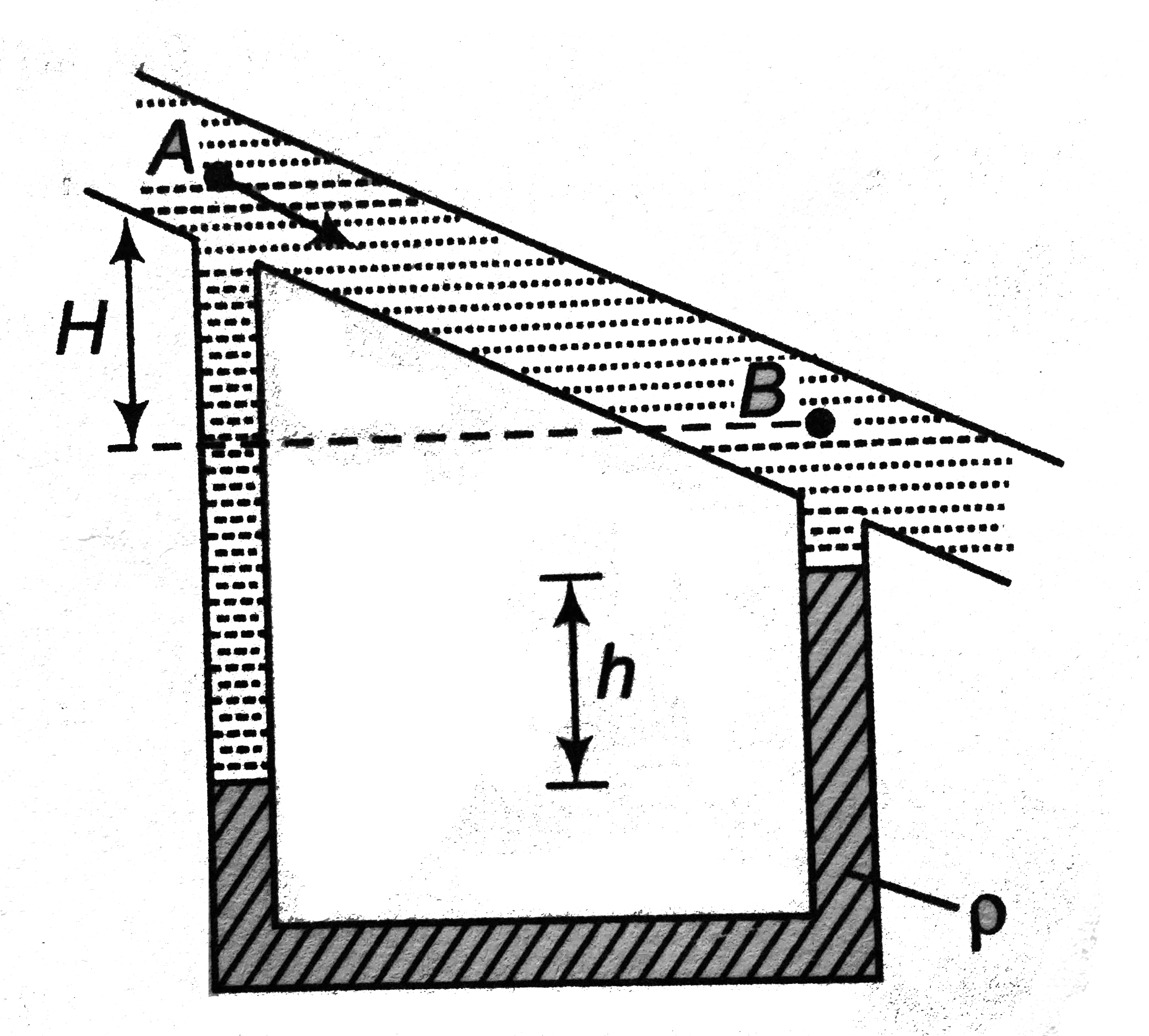In a horizontal pipe a liquid of density d enters with velocity v and leaves with velocity 2v. The pressure difference between the ends of the pipe is
3xV2
32dv2
14dv2
12dv2
The correct Answer is:B
Similar Questions
water enters at one end of a horizontal pipe of non-unifrom cross -section with a velocity of 0.4ms−1 and leaves the other end with a velocity of 0.6ms−1 The pressure of water at the first end is 1500Nm−2 Calculate the pressure at the other end Density of water =1000kgm−3
View SolutionWater flows through a pipe bent at an angle α to the horizontal with velocity v . Calculate the force exerted by the water on the bend of the pipe of area of cross - section S .
View Solution
Knowledge Check
Water enters a horizontal pipe of non uniform cross section with a velocity of 0.5 m/s and leaves the other end with a velocity of 0.7 m/s. the pressure of water at the first end is 103N/m2. Calculate pressure at the other end. (Density of water =1.0×103kg/m3)
A980N/m2B880N/m2C800 N/mDNone of theseThe figure shown a pipe of uniform cross-section inclined in a vertical plane. A U-tube manometer is connected between the point A and B. If the liquid of density ρ0 flows with velocity v0 in the pipe. Then the reading h of the manometer is
 Ah=0Bh=v202gCh=ρ0ρ(v202g)Dh=ρ0Hρ−ρ0
Ah=0Bh=v202gCh=ρ0ρ(v202g)Dh=ρ0Hρ−ρ0Water is flowing in a pipe of diameter 4 cm with a velocity 3m/s . The water then enters into a tube of diameter 2 cm . The velocity of water in the other pipe is
A3m/sB6m/sC12m/sD8m/s
A liquid of density ρ flows along a horizontal pipe of uniform cross - section A with a velocity v through a right angled bend as shown in Fig. What force has to be exerted at the bend to hold the pipe in equilibrium ?
View SolutionThe figure shown a pipe of uniform cross-section inclined in a vertical plane. A U-tube manometer is connected between the point A and B. If the liquid of density ρ0 flows with velocity v0 in the pipe. Then the reading h of the manometer is

View SolutionThere is a conical pipe of radii of its two ends as 0.2m and 0.02m with 20 N/m2 as the pressure difference along its length. A liquid of density 1.00×103kg/m3 is flowing through the pipe. Calculate the rate of flow of liquid through the pipe.
View SolutionIf an object of volume V and density d1 is immersed in a liquid of density d2 and volume of the liquid displaced is v, then the relation between them is given by the expression__= ___.
View SolutionThe rate of flow Q (volume of liquid flowing per unit time) through a pipe depends on radius r, length L of pipe, pressure difference p across the ends of pipe and coefficient of viscosity of liquid η as Q∝rapbηcLd, then
View Solution
